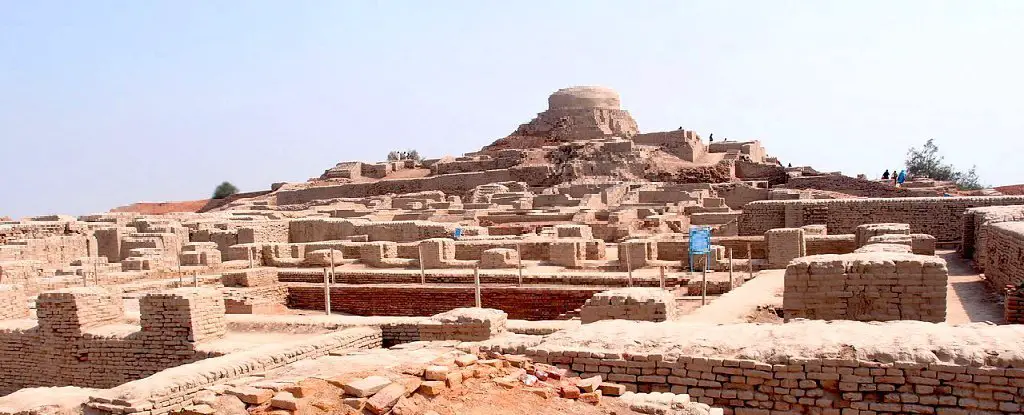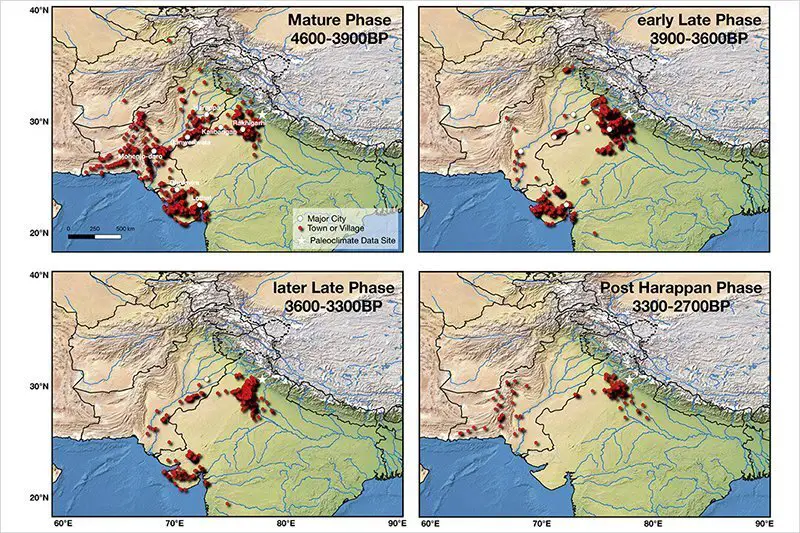Mathematical Method Shows How Climate Change Could Have Toppled The Famed Indus Valley Civilization
Tags: opinion

Ancient Egypt, Mesopotamia, and Indus Valley were the most distinguished and flourishing civilizations of the ancient world in the continent. But there are many contradictory theories about the decline of Indus Valley Civilization. Recently, a mathematical proof has helped to pinpoint climate change as the leading cause of their decline.
Rochester Institute of Technology’s mathematical scientist Nishant Malik was the one who found the missing link. During his research, Malik found the evidence that showed increasing droughts and shifting monsoons were the reasons that drove away the Harappans.
Stalagmites found in caves are used to calculate the rainfall amount in such ancient places. Previously, scientists had analyzed a particular isotope in some stalagmites in a cave near the civilization to estimate the amount of monsoon rainfall in the area over the last 5000-6000 years.
But Malik identifies patterns in that data that showed major shifts in monsoon patterns. These patterns were aligned with the rise of the Bronze Age empire. The pattern reversed as the civilization inched towards its decline. This helped Malik establish the link between climate change and the decline of the Indus Valley Civilization.
Climate Change and Indus Valley
Malik explained how the data usually they derive from paleoclimate is from a short span of time with uncertainties and noise.
“As far as mathematics and climate is concerned, the tool we use very often in understanding climate and weather is dynamical systems. But dynamical systems theory is harder to apply to palaeoclimate data.”
“This new method can find transitions in the most challenging time series, including palaeoclimate, which are short, have some amount of uncertainty, and have noise in them,” said Malik.

Credit: Rochester Institute of Technology
Malik’s special interest was in the dynamical regime transition where infrequent events suddenly turn more frequent. Dynamical regime transition has applications in biology, physics, and even economics. It is also found in precipitation pattern changes and also in stock market hikes. Certain elements of this dynamical theory were combined with elements of information theory and machine learning that is based on algorithms. This helped Malik fill some of the gaps in previous records. He calculated the pattern probability, which doesn’t show up in standard graphs. Malik said this is an effective method of filling data. That is mainly because, with stalagmite records, summer monsoons are considered every five years only.
Malik’s research about climate change was published in Chaos: An Interdisciplinary Journal of Nonlinear Science.
Hey, are you enjoying our content? Want to see also some thought-provoking videos from Truth Theory? We are on YouTube, make sure you subscribe to our YouTube channel, click HERE
History of Harappa
Harappa was one of the first sites archeologists had identified while excavating. Hence the Indus Valley Civilization is also called the Harappan Civilization. Before climate change forced the residents to disperse from the area, the settlements of this Civilization stretched for about 1500km up the Indus river in north-west India. The peak of the Civilization saw nearly 60,000 inhabitants residing in its cities.
Now, Malik’s mathematical method has proved that it was indeed climate change that led to the decline of this great empire. Previous claims of war and earthquakes as the cause for decline now hold no merit. If climate change can diminish such an empire, is it not time yet for us to take notice? If serious steps are not taken now, would climate change bring a similar fate for us?
Featured Image: kunphel/Wikimedia Commons/CC BY-SA 3.0
Leave Comment: